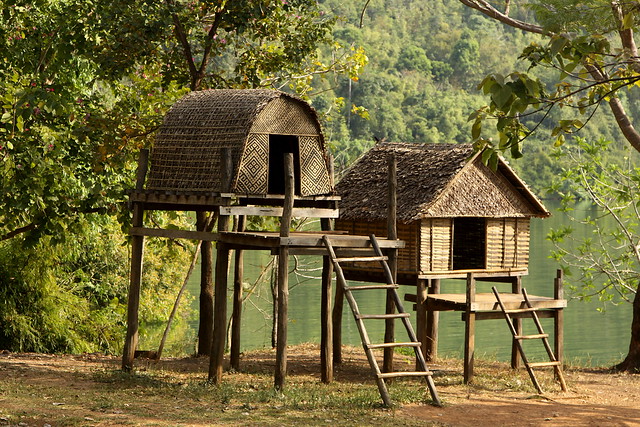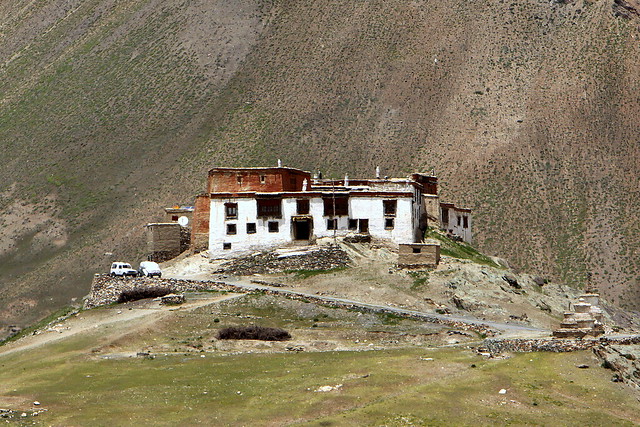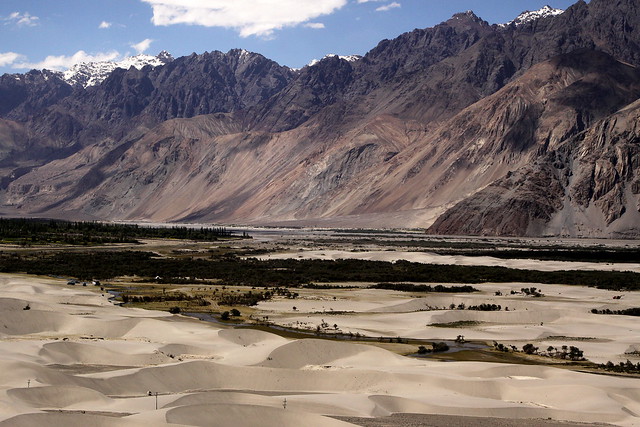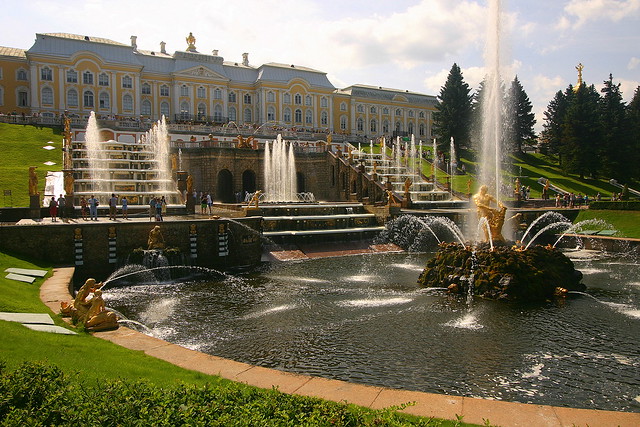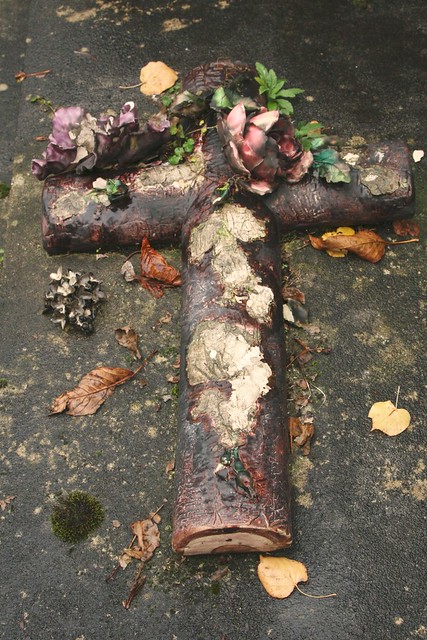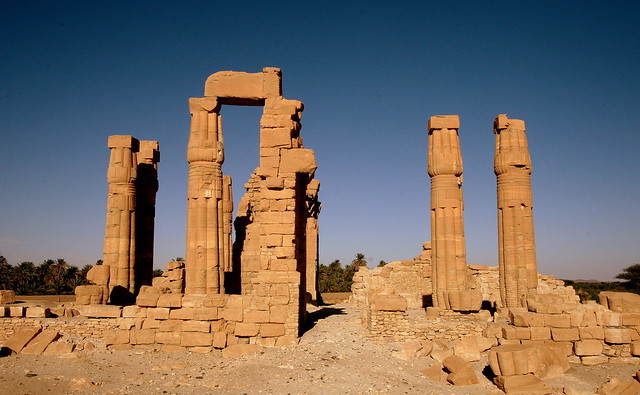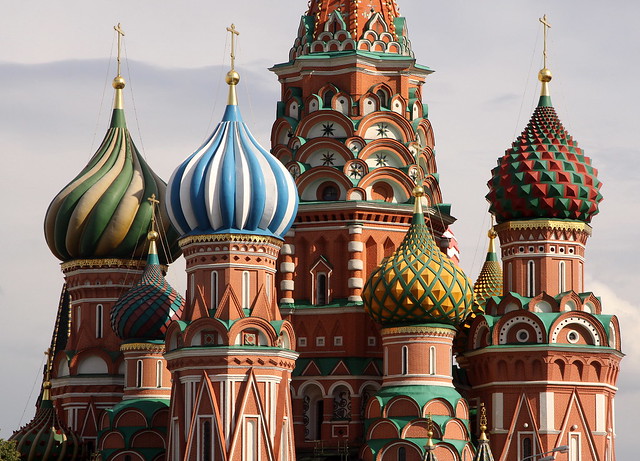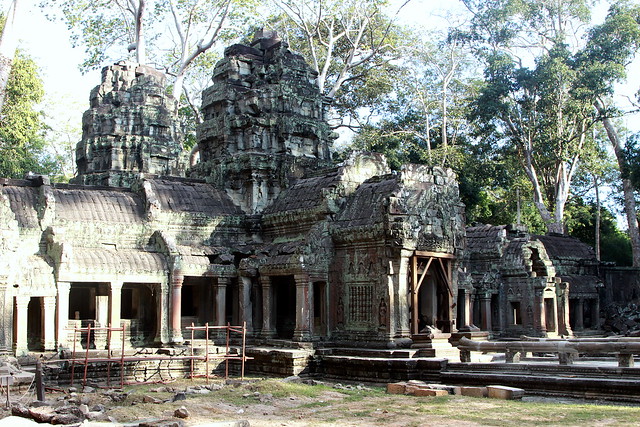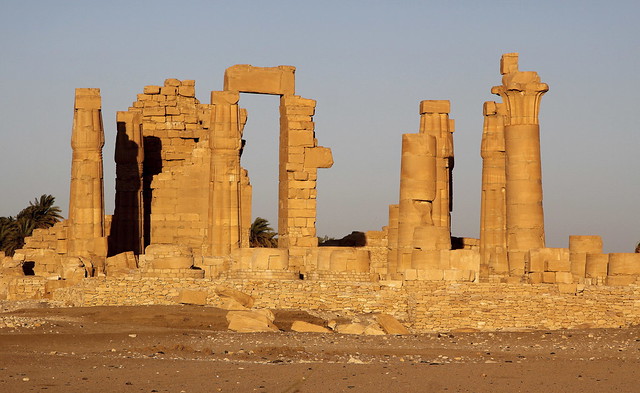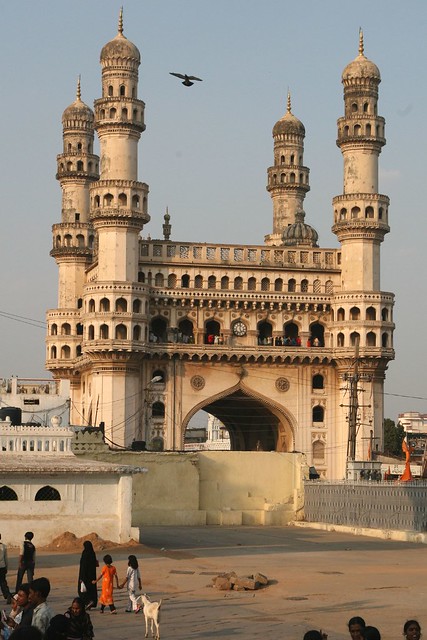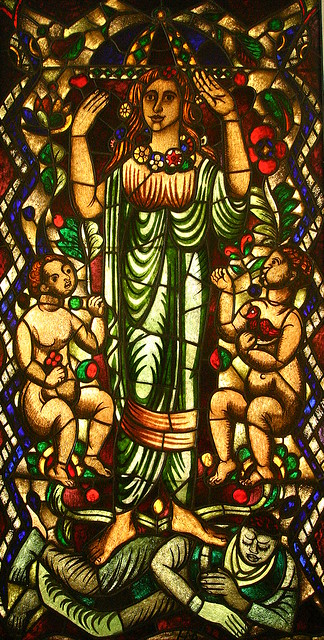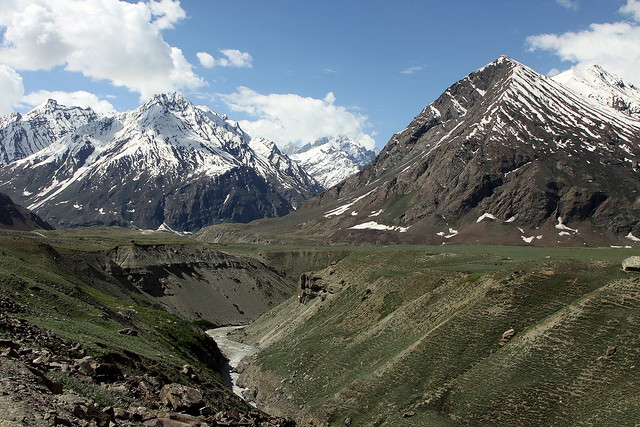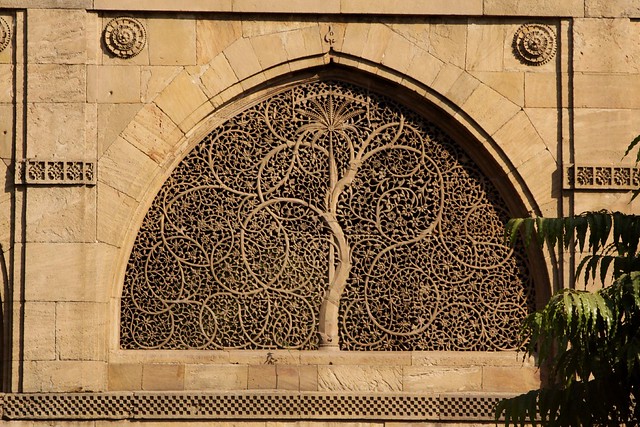
india - gujarat
The Sidi Sayed Mosque in Ahmedabad.
Jali work.
The Sidi Sayed Mosque in Ahmedabad is one such famous and ancient mosque of the city.
The Mosque of Sidi Sayed or rather the Sidi Sayed Mosque in Ahmedabad is situated close to the famous Lal Darwaja. In fact, the mosque is located inside Bhadra, a fortified bastion that was built by Sultan Ahmed Shah in the year 1411 A.D. The elegant mosque was built by Sidi Sayed, a slave of Sultan Ahmed Shah. The mosque is famous all over the country because of its fantastic architecture and exquisite Jali work or stone tracery. The mosque is built of yellow stone and is an example of early Muslim architecture. The Jali work found on the windows of this mosque are worth admiring. The intricate and delicate carvings clearly highlight the talent of the craftsmen of the olden days. The stone has been carefully carved in order to create the filigree effect. The intricate carvings are fine examples of India's rich architectural heritage.
The Sidi Sayed Mosque in Ahmedabad is particularly famous for the twin stone windows. The Jali work on the windows depicts palm trees with curved tendrils. The carvings are truly beautiful and praiseworthy. The Jali work is found in all the ten semi-circular windows of the mosque. The carved windows found on the western wall of the mosque are the most beautiful of them all. The carved screens depict floral patterns and designs.
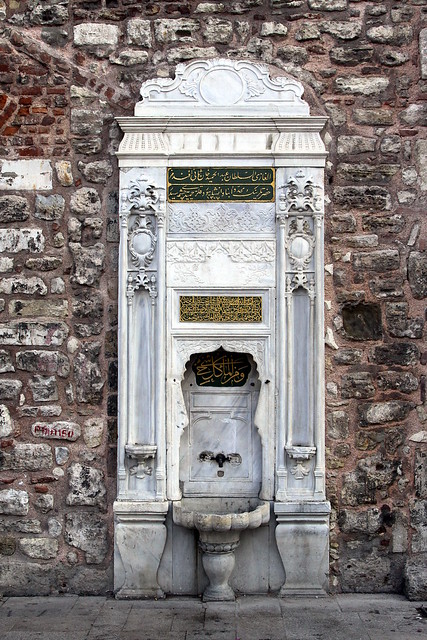
istanbul - turkey
Fountain of Istanbul.
Endowing money for the construction of a fountain and a water supply line to it was an act of piety which played an important role in Ottoman life. Hardly a sultan, sultan's mother, sultan's daughter, grand vezir, or other august personage did not endow a fountain in expression of their economic, social and political standing, and fountains became an important part of the architectural tradition. Fountains were decorative features of both outdoor public spaces like squares, and intimate indoor spaces in private dwellings, and they reflected the architectural taste and styles of their time. Surviving documents show that in the sixteenth century in particular the Ottoman government favoured supplying public fountains rather than private homes with mains water. This made the local fountain an indispensable focal point of every neighbourhood. In these introverted neighbourhoods, with their wooden houses with jettied upper storeys, deadend streets, and lanes reflecting their organic evolution, the fountain shaped their unique character. The human scale organic streets wound and turned their way to the mosque square, which was always characterised by a fountain as well as a coffee house and spreading plane tree casting welcome shade. In Istanbul, as in every Turkish city in the past, the local fountain was a hub of social intercourse.
Istanbul was never at any time a city with abundant water sources close at hand, but from the sixteenth century onwards, as the water system was improved and extended, the government began to permit water to be piped into private mansions in the city and along the Bosphorus. The luxury of piped mains water was a privilege requiring a royal patent, and ordinary people were still largely dependent on neighbourhood public fountains for their water, augmented by that obtained from wells and cisterns.

azerbaijan
Khan's Palace in Sheki (Azerbaijan).
Sheki is famous for the 18th century Khan's summer palace. It was built in 1762 by Hussein khan who was also well known as a poet under his pen-name Mushtag. The two-storied building is decorated with magnificent frescos (one 24 m long) and exquisite stained glass work, known as 'shebeke' (northern part of the city). The Turkish poet Nazim Hikmet wrote: "If there will be no other building in Azerbaijan it will be enough to show Khan Palace to the world". Measuring thirty-two meters by eight and a half meters on the exterior, the palace is a two-story brick masonry structure elongated on the north-south axis and covered with a wooden hipped roof with long eaves. The layout of both floors is identical; three rectangular rooms are placed in a row, separated by narrow, south-facing iwans that provide access to the rooms. The summer residence is renowned for the lavish decoration of its exterior and interior. The façades are covered in tiles with floral and geometrical motives. The interior walls of the residence are covered with frescoes painted during the eighteenth century. Many of the frescoes feature flowers in vases, while a series of paintings on the first floor halls depict hunting and battle scenes. Signatures on frescoes list the names of artists Ali Kuli, Kurban Kuli and Mizra Jafar from Shemaha, Usta Gambar from Shusha, and Abbas Kuli, who may also have been the architect of the summer residence.

bhutan
Praying Bhutanese pilgrim.
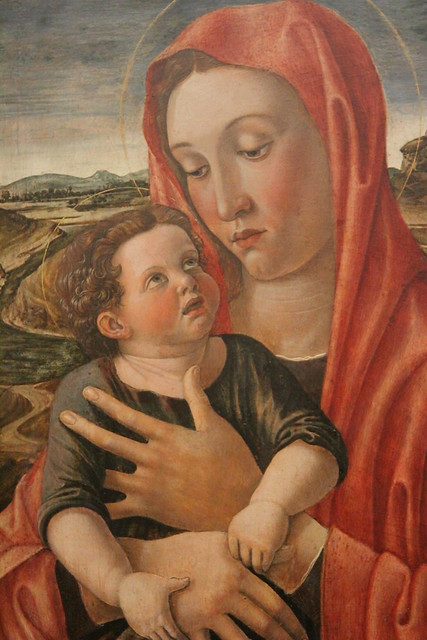
berlin
Masterpiece of the Gemäldegalerie of Berlin (Germany).
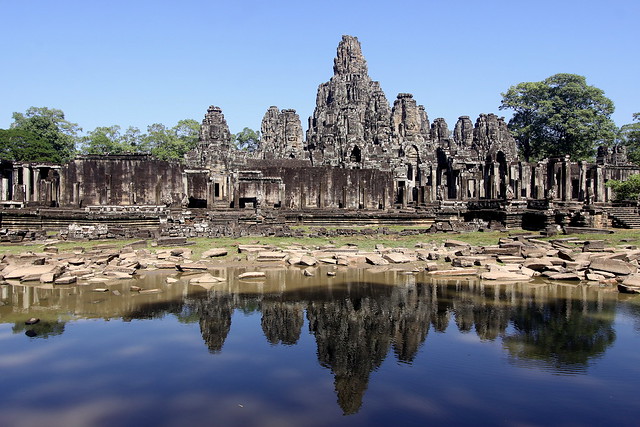
cambodia
The Bayon - Treasures of Angkor.
Face-tower.
The BAYON: A temple-mountain, a forest of 200 gigantic faces in the mysterious glances looking in all the directions, at enigmatic smiles, at beings of another world, in their smiling serenity. This 3-storeyed temple and 43 m of height , stayed for a long time an enigma. Built in 12th century by Jayavarman VII, first floors are a pantheon dedicated to the gods Khmers of the beginning of its construction, in a time of transition between the Hinduism and the Buddhism. The superior floor is dedicated to Buddha. Fabulous low reliefs of 1200m of length and representing more than 11000 sculptured persons, very long frescoes telling the fights and the naval battles between the Khmers and the Chams, as well as the daily life.
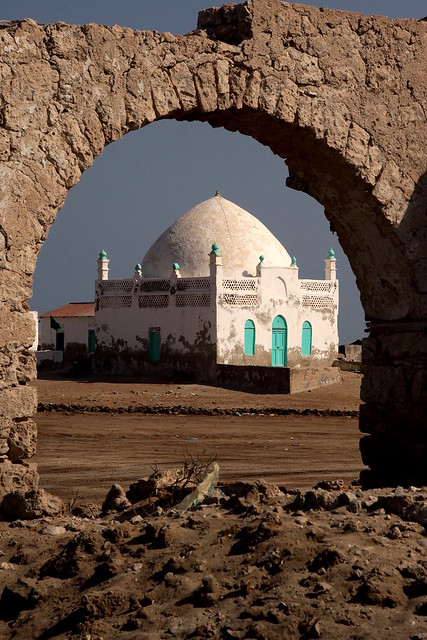
africa - somaliland
Mausoleum in Zeila.
Zeila was an important town in history. But her monuments have suffered a lot during the civil war of the nineties.
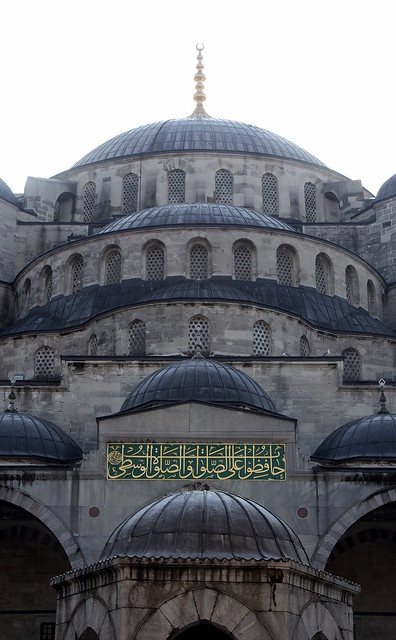
istanbul - turkey
Blue Mosque (Istanbul).
Istanbul's Blue Mosque, also known as the 'Sultan Ahmet Mosque' by local people, was built by Sultan Ahmet in 1609 and completed in 7 years, although foreigners have taken to calling it the Blue Mosque ' because of the beautiful blue Iznik tiles decorating the interior. The architect who oversaw the mosque's design was Sedefkar Mehmet Aga, better known as a student of Sinan (the greatest architect ever seen in the Ottoman Empire). Not only was it built to serve as a mosque, but its huge surrounding complex also held a medrese (theological school), turbe (tomb), hospital, caravaserai, primary school, public kitchen and market, although the hospital and caravanserai were destroyed in the nineteenth century.After the public kitchens were destroyed in a fire in 1970, they were restored and incorporated into the School of Industrial Art. It presently serves as the Dean's Office for the Marmara University.
india - ladakh - zanskar - kasjmir - himachal pradesh
A trip starting in Srinagar and ending in Delhi with a lot of highlights in the Zanskar valley and in Ladakh.
See also:
www.flickriver.com/photos/waltercallens/ random/
www.flickr.com/photos/waltercallens/favo rites/
english.cohga.net/flickr/user/74089637@N 00_1.html
www.fluidr.com/photos/waltercallens/sets
www.lurvely.com/index.php?owner=74089637 @N00
Created with Admarket's flickrSLiDR.
| The Ultimate Self Realization Course (tm) | | |
| Special New Release--Hear It Right Now!! | Special Announcements!
| See Sankarshan Prabhu's | |
| Get Krishna's Special Mercy by Rendering Devotional Service If you'd like to contribute something to help cover the expenses of Sankarshan Prabhu's European Lecture Series you can | On the order of his spiritual master, Srila Prabhupada, Sankarshan Prabhu has dedicated his life for the most urgent work of spreading Krishna consciousness all over the world. The more that Krishna consciousness spreads, the more that the suffering, scarcity, and hate on this planet will be replaced with bliss, abundance and love. This is a golden opportunity for us to do the highest good for all living beings and receive the special blessings of the Lord. Therefore we should, as much as possible, sacrifice our time, energy, and resources to assist Sankarshan Prabhu in his most important work. If you would like to help out to any extent, little or big, kindly inform Sankarshan Prabhu of your desire. | Meet If you would like to meet Sankarshan Prabhu or hear his lectures, you may contact us directly for an appointment or specific information on where and when his lectures will be held. | |
| Do You Have Questions or Need Guidance? | All inquiries are welcome. | Contact Information: Phone: 1-512-835-2121 or Email your questions |

 Sri Krishna Janmastami
Sri Krishna Janmastami Maha Kalash Abhisekha
Annual Patron Member Puja You are cordially invited to sponsor a Golden Kalash to bathe Sri Sri Radha Krishna, on the most auspicious day of
Sri Krishna Janmastami
(September 4, 2007)
This is a wonderful chance for you and your family to sponsor a beautiful bathing ceremony for Sri Sri Radha and Krishna. With your generous sponsorship, you will get to keep the sacred Kalash that the temple priest uses to bathe the Lord on your behalf. We will mail you your golden Kalash along with a wonderful assortment of prasadam sweets that will be offered to Sri Sri Radha Krishna on Janmastami. Your tax deductible contribution with help us to maintain and develop the worship of Lord Krishna.
Your golden Kalash is an amazingly beautiful transcendental work of art that your family will treasure for many generations. It will be shipped to you in a red velvet box as seen above:
There is a very limited supply. So if you would like to to sponsor a Kalash, do so right away before they are all taken: www.backtohome.com/Kalash
| ||
| Home | Thought for The Day | Audio | Videos | Photos | Itinerary | Meditations on Pure Bhakti | Offerings | Services | ||
|

Up

TABLA - FUENTES - FONTS
SOUV2
- SOUV2P.TTF - 57 KB
- SOUV2I.TTF - 59 KB
- SOUV2B.TTF - 56 KB
- SOUV2T.TTF - 56 KB
- bai_____.ttf - 46 KB
- babi____.ttf - 47 KB
- bab_____.ttf - 45 KB
- balaram_.ttf - 45 KB
- SCAGRG__.TTF - 73 KB
- SCAGI__.TTF - 71 KB
- SCAGB__.TTF - 68 KB
- inbenr11.ttf - 64 KB
- inbeno11.ttf - 12 KB
- inbeni11.ttf - 12 KB
- inbenb11.ttf - 66 KB
- indevr20.ttf - 53 KB
- Greek font: BibliaLS Normal
- Greek font: BibliaLS Bold
- Greek font: BibliaLS Bold Italic
- Greek font: BibliaLS Italic
- Hebrew font: Ezra SIL
- Hebrew font: Ezra SIL SR
Disculpen las Molestias

Up
Sankarshan Das Adhikari - ANUAL
Conceptos Hinduistas (1428)SC
Aa-Anc · Aga - Ahy · Ai - Akshay · Akshe - Amshum · Ana - Ancie · Ang - Asvayu · Ata - Az · Baa-Baz · Be-Bhak · Bhal-Bu · C · Daa-Daz · De · Dha-Dry · Du-Dy · E · F · Gaa-Gayu · Ge-Gy · Ha-He · Hi-Hy · I · J · K · Ka - Kam · Kan - Khatu · Ki - Ko · Kr - Ku · L · M · N · O · P · R · S · Saa-San · Sap-Shy · Si-Sy · Ta - Te · U · V · Ve-Vy · Y · Z
Conceptos Hinduistas (2919) SK
Aa-Ag · Ah-Am · Ana-Anc · And-Anu · Ap-Ar · As-Ax · Ay-Az · Baa-Baq · Bar-Baz · Be-Bhak · Bhal-Bhy · Bo-Bu · Bra · Brh-Bry · Bu-Bz · Caa-Caq · Car-Cay · Ce-Cha · Che-Chi · Cho-Chu · Ci-Cn · Co-Cy · Daa-Dan · Dar-Day · De · Dha- Dny · Do-Dy · Ea-Eo · Ep-Ez · Faa-Fy · Gaa-Gaq · Gar-Gaz · Ge-Gn · Go · Gra-Gy · Haa-Haq · Har-Haz · He-Hindk · Hindu-Histo · Ho-Hy · Ia-Iq · Ir- Is · It-Iy · Jaa- Jaq · Jar-Jay · Je-Jn · Jo-Jy · Kaa-Kaq · Kar-Kaz · Ke-Kh · Ko · Kr · Ku - Kz · Laa-Laq · Lar-Lay · Le-Ln · Lo-Ly · Maa-Mag · Mah · Mai-Maj · Mak-Maq · Mar-Maz · Mb-Mn · Mo-Mz · Naa-Naq · Nar-Naz · Nb-Nn · No-Nz · Oa-Oz · Paa-Paq · Par-Paz · Pe-Ph · Po-Py · Raa-Raq · Rar-Raz · Re-Rn · Ro-Ry · Saa-Sam · San-Sar · Sas-Sg · Sha-Shy · Sia-Sil · Sim-Sn · So - Sq · Sr - St · Su-Sz · Taa-Taq · Tar-Tay · Te-Tn · To-Ty · Ua-Uq · Ur-Us · Vaa-Vaq · Var-Vaz · Ve · Vi-Vn · Vo-Vy · Waa-Wi · Wo-Wy · Yaa-Yav · Ye-Yiy · Yo-Yu · Zaa-Zy









